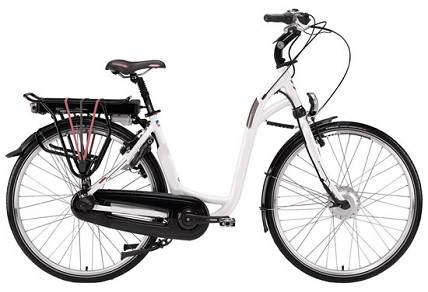Power assisted bicycles
Power assisted bicycles are likely to have similar performance characteristics to pedal powered bicycles so the same road rules apply. These types of power assisted bicycles are not required to be registered nor the rider required to be licensed.
Definition of a power assisted bicycle
A power assisted bicycle is identical to a pedal powered bicycle, except it has an auxiliary motor. Power assisted bicycles have two definitions in Victoria:
- A bicycle with one or more auxiliary motors attached which has a combined maximum ungoverned continuous rated power output not exceeding 200 watts.
- An electrically power-assisted cycle (EPAC). These are pedal cycles with an electric motor that has a maximum continued rated power of 250 watts. The power-assistance progressively reduces as the speed increases and cuts off once a top speed of 25 kilometres per hour is reached. EPACs require the rider to pedal to access the power.
Power assisted bicycles that meet the above definition are allowed to be ridden in Victoria as they are classed as bicycles.
What is the purpose of power assisted bicycles?
The purpose of the auxiliary motor(s) is to provide assistance to the rider, for example when cycling uphill or against the wind, to enable older or less able bodied people enjoy the benefits of cycling or to enable people travel comfortably over longer distances.
What is an EPAC?
An EPAC (formally known as a Pedalec) is a type of power assisted bicycle equipped with one or more auxiliary propulsion motors. It allows a maximum power of 250 watts, with a safeguard allowing for power assistance only when the bicycle is travelling at less than 25km/h and the rider is pedalling. This means that the rider must pedal to obtain help from the auxiliary motor(s) and cannot simply be propelled by the motor alone. Note: The motor may operate without the rider pedalling up to a speed of 6km/h.
An EPAC is a safe alternative mode of transport to a manual bicycle or passenger car. An EPAC has power assistance that allows a bicycle rider to travel further and ride with less effort.

What is not a power assisted bicycle?
A motorised bicycle is not classed as a bicycle if:
- the motor is not an auxiliary source of power (a person must still be able to propel the bicycle via pedals without the motor operating).
- the motor's power output exceeds 200 watts (whether or not the motor is operating) unless it is an EPAC.
These are considered to be motorcycles. The rider will be required to hold a motorcycle licence and have the vehicle registered before it can be used on the road network. Motorcycles cannot be ridden on footpaths or bicycle paths. Motorcycle riders must wear an approved motorcycle helmet.
The following examples are likely to be classed as motorcycles and not bicycles:
- An EPAC that has been modified such as a modification to allow more than 250 watts to be produced or to exceed 25km/h assisted speed
- A bicycle with a petrol-powered motor attached. Even the smallest conversion kits produce well in excess of 200 watts and are capable of high speeds. These speeds are comparable to those of small motorcycles.
- Motorcycle scooters with pedals. These vehicles generally have motor vehicle features (e.g. headlights, mirrors, indicators etc.) and have not been built to be propelled easily by using the pedals.
- High-powered motorised bicycles designed for off-road use. These vehicles typically have motors exceeding 200 watts.
Overpowered bicycles are capable of travelling consistently at much higher speeds than lawful power-assisted bicycles, often without the rider needing to pedal. Such vehicles take longer to stop and increase the risk of a crash resulting in serious injury or death.
Bicycle road rules
A rider of a power assisted bicycle must comply with Victorian bicycle road rules. Visit the bicycle road rules page for more information.